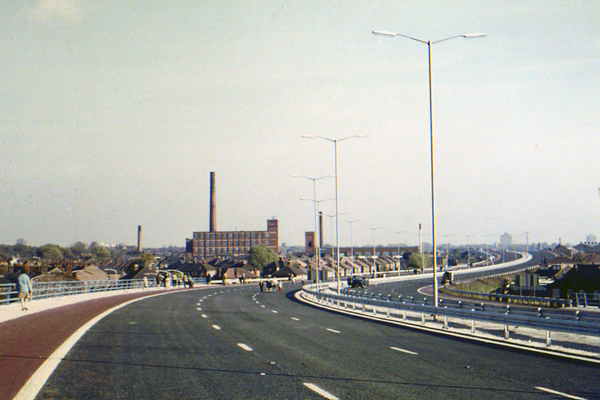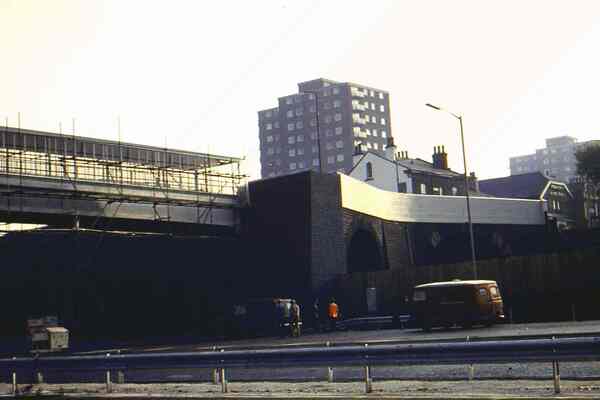
The men who descended into the mine immediately after the terrible accident - including a lad of just 16 - Geroge Hindley - would receive the Albert Medal (now replaced by the George Cross) in recognition of their heroism.
Known locally as Lumn's Colliery, the pit was situated on Lumns Lane in Clifton, a short distance from Clifton Junction Station on the Lancashire and Yorkshire Railway.
Three main seams - Doe mine, Quarters mine and Trencherbone mine - stretched some 540 yards into the earth.
This terrible tragedy claimed the lives of 178 men and boys from the local area, but safety at the pit was generally good: there had been nothing of this magnitude in the 50 or so years since the colliery opened.
Protector lamps - like the kind manufactured in Eccles at the time - were used underground to detect gas, although naked flames were still allowed when the ventilation was "remarkably good".
At 9.20am on Thursday 18 June 1885, a massive explosion occurred.
The ground shook for half a mile around while guardrails on two sides of the pit mouth were blown away and the cages which would drop men hundreds of yards into the ground were rendered useless.
It was thought that around 200 men were underground at the time. As the cages were out of action, Colliery Manager Jonathan Hall, blacksmith William Hindley, and pit man Aaron Manley were winched down the shaft in a kibble [large bucket).
They saw that the cages had blocked the shaft and could proceed no further. They returned to the surface for a smaller kibble in which Manley, Hindley and Peter Horsfield descended and managed to loosen one of the cages.
Just then the surface bell rang to indicate that someone was alive down below.
The kibble was wound to the bottom of the shaft. The scene at the bottom was horrendous with dead bodies, men badly burned and men suffering the effects of "afterdamp" (carbon monoxide poisoning).
When the cages were working, the rescuers brought up 75 men, including 13 bodies, one of whom was 20-year-old William Reynolds, who would later be buried at Weaste Cemetery.
The dead men were conveyed to a stable close by and laid out for identification, which in some instances was difficult given the extent of the burning on the bodies.
The Salford City Reporter said: "There were no extravagant demonstrations of grief, but the subdued sobbing of children, the blank dismay depicted on the faces of the women and the settled melancholy visible in the men, that told how deeply they felt the losses they had sustained".
Miners working the Doe seam were able to escape by walking along a connecting road to Agecroft Colliery about half a mile away.
This was a torturous route, flooded in parts and air full of afterdamp sapping their strength. It was said that some men were overcome and fell into the water and drowned.
Luckily 122 men and boys made it up the Agecroft shaft but nine bodies were recovered including Thomas Worsley, age 28.
At 4pm another rescue party descended the Clifton Hall shaft to search the Trencherbone seam.
Suddenly the smoke coming up the shaft changed colour indicating something had happened.
Communication with them ceased and they feared the worst. Another small rescue party descended, but could only go down 150 yards as a dense volume of gas prevented further progress.
They noticed that a wall had collapsed before getting back to the surface.
Fortunately the first group had reached the Doe Seam and were able to make their way to safety via the Agecroft shaft. Some of the injured men and boys (including William Lycett, aged 16), were taken to Salford Hospital or to their homes and some died of their injuries.
In all, 178 men and boys died in this disaster.
The disaster victims were buried at many of the local churches and six were buried at Weaste Cemetery.
On Monday 22 June, William Lycett, 16, of Franchise Street, Pendleton and Thomas Worsley, 28, of Kent Street, Pendleton, were buried in the C of E portion by Rev. H. Gore-Booth, Rector of Sacred Trinity Church.
William Reynolds, 20, of Jane Lane, Swinton and Thomas Slattery, 34, of Jane Lane, Swinton, were buried in the Catholic portion by Rev Father McIntosh of the Salford Cathedral.
On Tuesday 23 June, George Hall, aged 42, and his stepson Leonard Charles Barter, aged 13, both of 9, Oldham Street, off Church Street, Pendleton, were buried in the same grave in the C of E portion by Rev WH Stevenson, Curate of Sacred Trinity Church.
George Hall had previously "seen 21 years service in the army and enjoyed the pension appertaining to the rank of Farrier Sergeant of the 11th Hussars".
A nine-day inquest opened on 30 June at Pendlebury Mechanics Institute, concluding that the cause was an "explosion of a large amount of inflammable gas emitted from a goaf (old workings) in the Trencherbone mine" which ignited at a lighted candle.
It added that 159 men found in the Trencherbone mine died from burns, suffocation or injuries; nine died in the road to Agecroft shaft from carbon monoxide suffocation; seven died in their homes due to shock from burns; one man died at home from the effects of carbon monoxide
poisoning; and two died at Salford Royal Hospital from shock caused by burns.
Production of coal at Clifton Hall was to end permanently on 9 November 1929.
Many thanks to the Friends of Salford Cemetries Trust for the valuable help given in writing this story.
This article originally appeared on SalfordOnline in June 2014 and is reproduced here with permission from bespectacled international man of History and Mystery, Mr Tony Flynn Esq...
Edited by KARL







Recommended Comments
There are no comments to display.
Create an account or sign in to comment
You need to be a member in order to leave a comment
Create an account
Sign up for a new account in our community. It's easy!
Register a new accountSign in
Already have an account? Sign in here.
Sign In Now